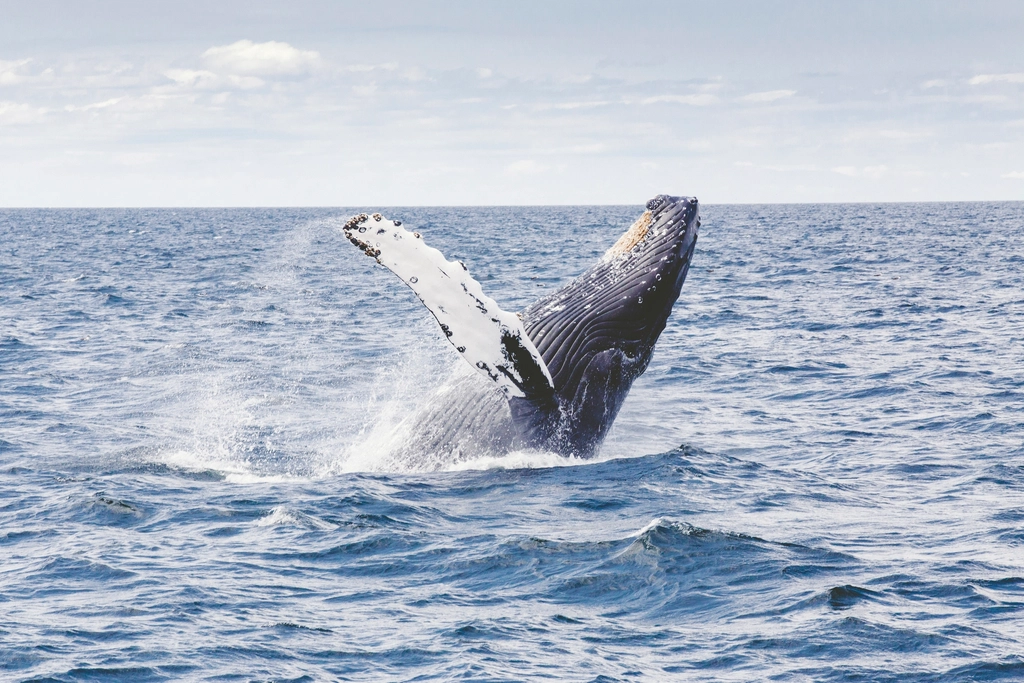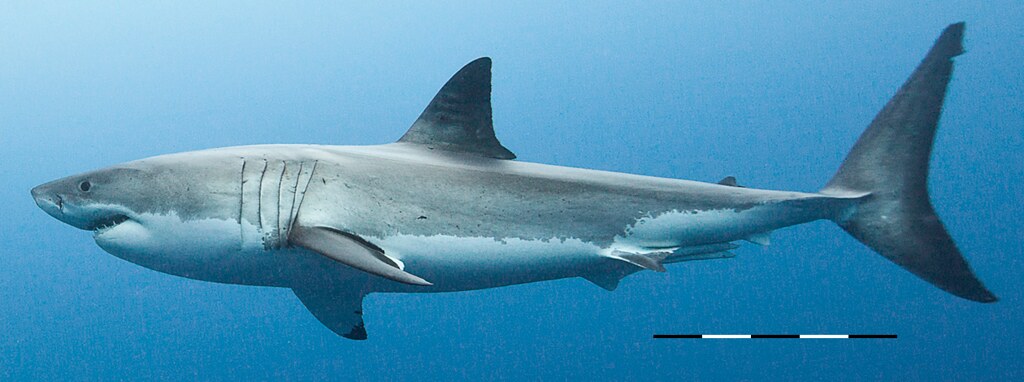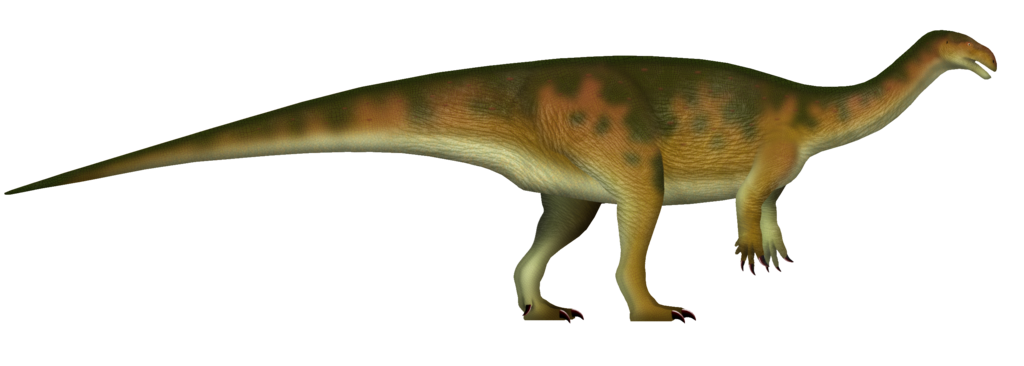Imagine standing next to a creature so massive that its footprint could fit your entire living room. Picture a heart the size of a small car pumping blood through arteries you could crawl through. These aren’t science fiction fantasies – they’re the reality of our planet’s most incredible giants, both past and present. From the thunderous footsteps of Argentinosaurus to the haunting songs of blue whales echoing across ocean depths, gigantism has shaped life on Earth in ways that continue to astound scientists and capture our imagination.
The Physics of Being Huge
Getting big isn’t just about eating more food and growing larger bones. The physics of gigantism creates a cascade of biological challenges that would make even the most creative engineer scratch their head. When an animal doubles in size, its volume increases by eight times, but its bone strength only increases by four times – a mathematical nightmare that nature had to solve. Think of it like trying to build a skyscraper with the same materials you’d use for a house. The structural demands become exponentially more complex as size increases. This is why elephants have thick, column-like legs rather than the delicate limbs of a gazelle. The circulatory system faces equally daunting challenges. A giraffe’s heart must generate enormous pressure to pump blood up its 18-foot neck, while a blue whale’s heart can weigh as much as a small car. These aren’t just bigger versions of smaller hearts – they’re completely re-engineered pumps designed for extreme conditions.
Ancient Titans of the Mesozoic Era

The Mesozoic Era was essentially nature’s experiment in super-sizing, and boy did it go all out. Sauropods like Argentinosaurus reached lengths of over 100 feet and weights exceeding 70 tons – imagine seven full-grown elephants stacked on top of each other. These weren’t just oversized lizards; they were biological marvels that redefined what it meant to be alive on land. What’s truly mind-blowing is how these giants managed to support their own weight. Their bones were hollow like bird bones, filled with air sacs that reduced weight while maintaining strength. It’s like nature invented its own version of aerospace engineering millions of years before humans figured out how to make airplanes. The neck of a Brachiosaurus alone could stretch 30 feet into the air, allowing it to browse treetops like a living construction crane. Recent studies suggest these necks weren’t just for reaching high – they were sophisticated feeding mechanisms that could sweep across vast areas without the animal having to move its massive body.
Ocean Giants and the Blue Whale Revolution

If you think land giants were impressive, wait until you dive into the ocean’s heavyweight division. The blue whale doesn’t just hold the title of largest animal alive today – it’s the largest animal that has ever lived, period. At lengths reaching 100 feet and weights up to 200 tons, they make even the biggest dinosaurs look like pets. Water changed everything about the gigantism game. Unlike land animals that must fight gravity every second of their lives, ocean dwellers get to float. This buoyancy is like having a full-time personal trainer whose only job is to make you weightless. Suddenly, the physics that limited land giants became irrelevant. But size in the ocean isn’t just about having more space to grow. Blue whales achieved their massive proportions by perfecting the art of filter feeding. Their mouths can engulf volumes of water equivalent to their own body weight, straining out tiny krill with baleen plates that work like the world’s most efficient pasta strainer.
The Oxygen Connection

Here’s something that might surprise you: the air you’re breathing right now would have been a suffocating death trap for many giant dinosaurs. During the Mesozoic Era, atmospheric oxygen levels were significantly higher than today – sometimes reaching 35% compared to our current 21%. This oxygen-rich environment was like performance-enhancing drugs for gigantism. High oxygen levels meant more efficient metabolism and energy production. Think of it as the difference between trying to run a marathon at sea level versus at high altitude. The extra oxygen allowed for larger body sizes, more active lifestyles, and the evolution of creatures that would struggle to survive in today’s atmosphere. This connection between oxygen and size isn’t just ancient history. Scientists have conducted experiments where they’ve raised insects in oxygen-rich environments, and the results are straight out of a horror movie – dragonflies with two-foot wingspans and beetles the size of small birds. It’s a glimpse into how atmospheric chemistry directly influences the upper limits of life.
Metabolic Marvels and Energy Economics

Being a giant isn’t just about having a big body – it’s about completely revolutionizing how you power that body. Large animals face what scientists call the “metabolic scaling problem.” Simply put, as animals get bigger, their metabolic rate doesn’t increase proportionally with their size. A mouse’s heart beats 600 times per minute, while an elephant’s beats just 30 times per minute. This metabolic efficiency actually becomes an advantage at larger sizes. Big animals need less food per pound of body weight than small animals. It’s like the difference between a gas-guzzling motorcycle and a fuel-efficient cruise ship – the bigger vessel uses less fuel per passenger mile. Sauropods took this efficiency to extreme levels. Recent studies suggest they might have had metabolic rates similar to modern reptiles, allowing them to maintain their massive size on surprisingly little food. They were essentially living, breathing examples of energy conservation in action.
Evolutionary Pressures Driving Gigantism

Size isn’t just about showing off – it’s often a matter of life and death. Throughout evolutionary history, getting bigger has been nature’s go-to solution for a variety of survival challenges. Predator pressure often drives prey animals to outgrow their hunters, while predators respond by getting bigger to handle larger prey. Climate also plays a crucial role in the evolution of giants. Bergmann’s rule suggests that animals in colder climates tend to be larger because big bodies retain heat more efficiently. It’s like the difference between a small campfire and a massive bonfire – the bigger fire stays warm longer. Competition for resources creates another pathway to gigantism. When food is scattered or difficult to reach, being tall or having a long neck becomes a massive advantage. Giraffes didn’t evolve long necks to look impressive – they evolved them to reach leaves that shorter animals couldn’t access.
Modern Marine Megafauna

Today’s oceans are still home to some absolutely mind-blowing giants that make most land animals look like toys. The giant Pacific octopus can have an arm span of 30 feet and weigh over 600 pounds – imagine wrestling with something that’s all muscle and has eight arms with suction cups. These cephalopods represent a completely different approach to gigantism, achieving massive size through soft tissue rather than bone and cartilage. Whale sharks, despite their intimidating name, are gentle giants that cruise the oceans like living submarines, reaching lengths of 40 feet while feeding on some of the tiniest organisms in the sea. Their size allows them to travel vast distances efficiently, crossing entire ocean basins in search of plankton blooms. Colossal squid take deep-sea gigantism to nightmare levels, with eyes the size of dinner plates and tentacles armed with rotating hooks that would make a medieval torture device look tame. Living in the crushing depths of the Southern Ocean, they’ve evolved to become the stuff of legends – and they’re very, very real.
The Extinction Factor

Being a giant comes with a deadly price tag that many species have paid throughout history. Large animals need more food, reproduce more slowly, and have smaller populations – a trifecta of vulnerability that makes them extinction magnets. When environmental conditions change rapidly, giants are often the first to disappear. The end-Cretaceous extinction event that wiped out non-avian dinosaurs hit large species particularly hard. While small mammals and birds could survive on limited resources, giants like Tyrannosaurus rex needed massive amounts of food that simply weren’t available in the post-asteroid world. It’s like trying to fuel a semi-truck when gas stations have closed – size becomes a liability rather than an advantage. Modern conservation efforts face the same challenge. Large animals like elephants, whales, and great white sharks are struggling not just because of direct human impact, but because their biological needs for space, food, and slow reproduction make them inherently vulnerable to rapid environmental change.
Island Dwarfism and Size Flexibility

Nature has a twisted sense of humor when it comes to size evolution. While some lineages race toward gigantism, others shrink dramatically when circumstances change. Island dwarfism is evolution’s way of proving that sometimes smaller is better – or at least necessary for survival. The famous “hobbit” humans of Flores Island, dwarf elephants of Mediterranean islands, and miniature mammoths of Wrangel Island all evolved from much larger ancestors. When resources are limited and space is constrained, evolution hits the shrink button with remarkable efficiency. It’s like nature’s own version of apartment living – you adapt to the space you have. This size flexibility demonstrates that gigantism isn’t a one-way evolutionary street. Animals can get bigger when conditions favor it, but they can also rapidly evolve smaller sizes when the environment demands it. The process works both ways, showing just how adaptable life can be when survival is on the line.
Biomechanical Innovations
The engineering solutions that evolution developed for giant animals would make any mechanical engineer jealous. Sauropod vertebrae weren’t just big bones – they were sophisticated structures with hollow chambers, struts, and weight-distribution systems that rivaled modern architectural designs. These weren’t accidents of evolution; they were precision-engineered solutions to specific structural problems. Elephant legs provide another masterclass in biological engineering. Unlike human legs that work like pillars with joints, elephant legs function more like hydraulic systems with specialized padding and bone arrangements that distribute enormous weight loads. The foot alone contains 18 toes and a sophisticated cushioning system that would put modern shock absorbers to shame. Whale hearts represent perhaps the most extreme example of biological engineering scaled up to giant proportions. A blue whale’s heart must pump 16,000 pounds of blood through a circulatory system that spans 100 feet of body length. The electrical system that coordinates each heartbeat has been redesigned to handle delays in nerve signals traveling such vast distances.
The Role of Climate in Giant Evolution

Climate has been the invisible hand guiding the evolution of giants throughout Earth’s history. The warm, humid conditions of the Mesozoic Era created perfect conditions for giant plant-eaters, with lush vegetation and mild temperatures that supported massive herbivores year-round. It was like having a perpetual all-you-can-eat buffet that never closed. Ice ages had the opposite effect, generally favoring smaller, more efficient animals that could survive on limited resources. However, some giants like woolly mammoths and giant ground sloths actually thrived in cold conditions, using their size as insulation against harsh climates. Their thick fur and massive body heat made them living furnaces in frozen landscapes. Ocean temperature changes have driven marine gigantism in fascinating ways. Cold, nutrient-rich waters support massive populations of small organisms, which in turn support filter-feeding giants like blue whales. The Antarctic waters where the largest whales feed are essentially giant refrigerators packed with krill – perfect conditions for creatures that need enormous amounts of tiny food.
Genetic Blueprints for Bigness

The genetic mechanisms behind gigantism are turning out to be far more complex and fascinating than scientists initially imagined. Recent research has identified specific genes that regulate body size, and the results are mind-blowing. Some genes can increase body size by 30% with just small modifications – it’s like having a biological volume control knob built into DNA. Growth hormone pathways play crucial roles, but they’re not the whole story. Genes that control cell division rates, bone density, and metabolic efficiency all contribute to the gigantism puzzle. What’s really incredible is how these genetic systems can be fine-tuned – slightly different expressions of the same genes can produce vastly different body sizes. Studying these genetic mechanisms in everything from mice to whales is revealing that the capacity for gigantism might be hiding in the DNA of many species. The building blocks are there; it’s just a matter of the right environmental pressures and evolutionary time to unlock them.
Deep Sea Giants and Pressure Adaptations

The deep ocean is home to some of the most bizarre and impressive giants on Earth, creatures that have evolved under crushing pressure and eternal darkness. Giant tube worms near hydrothermal vents can grow over 8 feet long, living in water hot enough to kill most life forms. They’ve essentially turned extreme conditions into evolutionary advantages. Deep-sea gigantism follows different rules than surface gigantism. In the crushing depths, being large actually helps withstand pressure, and the cold temperatures slow metabolism to incredibly efficient levels. It’s like evolution’s version of hibernation – slow, steady, and perfectly adapted to an alien environment. The giant isopods of the deep sea look like armored pill bugs the size of footballs, while spider crabs can have leg spans reaching 12 feet. These creatures prove that gigantism isn’t limited to well-known groups like whales and dinosaurs – it can emerge in the most unexpected forms when conditions are right.
Conservation Challenges for Modern Giants
Today’s giants face unprecedented challenges that make their ancient extinct cousins’ problems look simple by comparison. Blue whales, despite being protected for decades, still struggle with ship strikes, noise pollution, and climate change affecting their food sources. Their migration routes now intersect with some of the busiest shipping lanes on Earth – imagine trying to cross a highway blindfolded while semi-trucks barrel past at 70 mph. Elephants face the brutal mathematics of human expansion. These giants need vast territories to find enough food, but human development has fragmented their habitats into isolated patches. It’s like trying to live in a house where all the rooms have been separated by miles of dangerous territory. The conservation of giants requires thinking on a massive scale – protecting entire ecosystems rather than just individual species. Marine protected areas must be ocean-sized to accommodate whale migration routes, while elephant corridors need to span multiple countries. Saving giants means thinking like giants.
Future Prospects and Evolutionary Trajectories

Looking into the future of gigantism reveals both fascinating possibilities and sobering realities. Climate change is reshaping the conditions that have historically driven the evolution of giants, and the results are unpredictable. Rising ocean temperatures could affect the distribution of krill and other small organisms that support marine giants, potentially forcing evolutionary adaptations we can’t yet imagine. Human influence on evolution is creating entirely new selective pressures. Animals that can coexist with human development might have advantages, while those that require pristine wilderness face increasing challenges. We might be witnessing the beginning of a new chapter in gigantism – one where the ability to adapt to human-modified environments becomes the key to survival. The potential for de-extinction technology to bring back ancient giants raises incredible questions about the future of large animals on Earth. Should we bring back mammoths? Could we? And what would it mean for existing ecosystems if we did? These aren’t just science fiction questions anymore – they’re real possibilities that conservation biologists are seriously considering.
Conclusion

The story of gigantism is far from over. As we peer into the depths of ancient DNA and unlock the secrets of genetic engineering, we’re gaining unprecedented power to influence the future of large life on Earth. The giants of tomorrow might be shaped not just by natural selection, but by human choices about what kind of world we want to preserve and create. What giants will future generations marvel at, and which ones will they mourn as lost forever?




